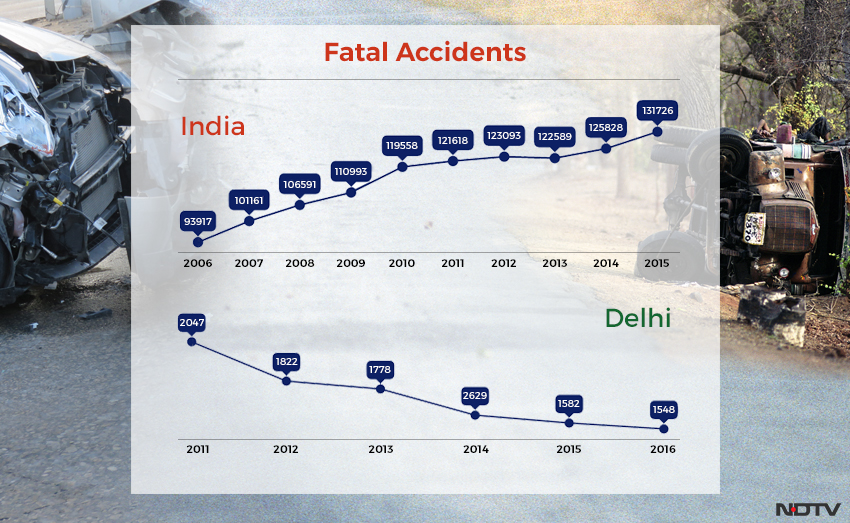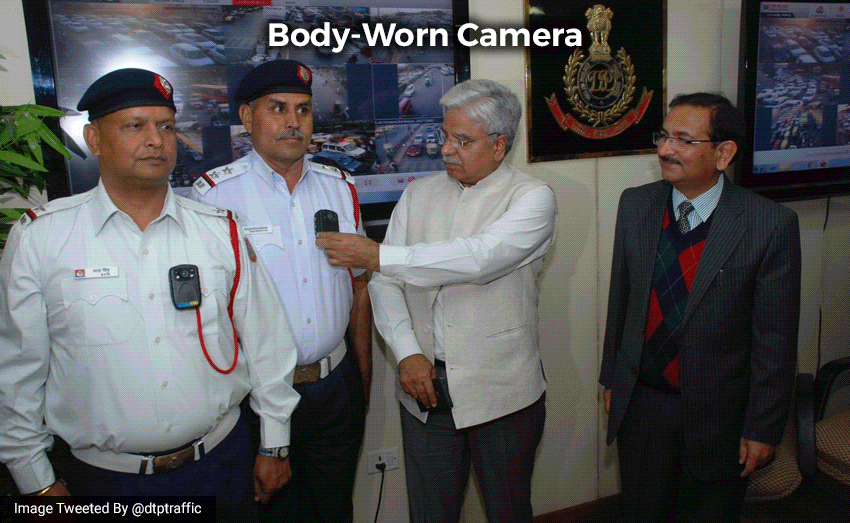
Delhi, Keep Up The Good Work! Now Road Accident Deaths On The Decline
Highlights
- In 2015, Delhi was named the ‘Accident Capital’ of India
- Fatalities from road accidents have declined now
- Delhi Traffic Police has identified 176 accident-prone spots
In 2015, Delhi was named the ‘Accident Capital’ of India, in a report by the Ministry of Road Transport and Highways. In that year alone, 1,622 people had died due to road accidents in the city. However, new data from the Delhi Traffic police shows that fatalities from road accidents have declined from 2,153 in 2010 to 1,548 in 2016.
Also Read: Can Delhi Remove The Tag Of Being The ‘Overspeeding’ Capital Of India?
So how was the mammoth task of decreasing road deaths in Delhi achieved?
For starters, the Delhi Police knew it would have to try some different tactics. Road length in Delhi is 33,198 kms, we have almost reached the saturation point in Delhi and the scope of improvement is marginal now, we cannot have a solution for safer roads by just expanding the city’s current road structure. The need of the hour is to look for alternate solutions, Ajay Kashyap, Special Commissioner of Traffic, Delhi Police told NDTV.

They started by analysing data from accidents to determine their causes. This included the time and place of such mishaps and the types of offending vehicles. Once they had this data they ensured that enough patrolling teams were deployed at accident-prone spots. These moves paid off and the numbers of road accident deaths saw a significant decline.

Action Plan For Reducing Road Accidents In Delhi
The Delhi Traffic Police has identified 176 accident-prone or black spots and appropriate remedial measures have been initiated in coordination with road-owning agencies. Sanjay T-point on NH8; Budhpur Ganda Nala area on GT Karnal road and Majnu-ka-tila area are some of the most accident-prone spots in Delhi.
We have chalked out a plan to treat accident-prone areas or ‘black spots’ all over Delhi in order to make roads safe here. We have listed out major spots and have given our suggestions to the local bodies of Delhi, says Ajay Kashyap.
The Delhi Traffic Police have also identified four major corridors which are more prone to road accidents due to heavy traffic. These are NH8, Dhaula Kuan To Rajokri; Mathura Road from Neela Kumbh to Badarpur flyover; Aurobindo Marg from Safdarjung tomb to Andheria Marg.
For corridors also, action plan with recommendations and safety measures is being sent to the local authorities so as all the zones can become ‘No Accident’ area, added Mr Kashyap.
Apart from improving the road infrastructure in Delhi, the Traffic Police are also keeping a stricter eye on drink driving, goods vehicles plying during restricted hours and heavy goods vehicles plying without protective devices.
Focused prosecution with an emphasis on over speeding, rash driving and action against commercial vehicles for violation of rules have helped to maintain better discipline on the roads, said the Delhi Police Team.
Technology In Traffic Management
The Delhi Traffic Police is sorely understaffed with 5,613 personnel managing 33,198 kms of roads and a population of over 1.85 crores. That makes road management in Delhi a daunting task. However, technology has played an important part in regulating the traffic, catching offenders and ensuring road safety. The Traffic Police have adopted e-challaning systems, interceptors, mapping section, body-worn cameras, and automated speed & red light violation detection cameras in their system in order to maintain safety on Delhi’s roads.

Also Read: 5 Technology Solutions That Can Make India’s Roads Safer
We have a 2 G enabled e-challan system and we are in process to get a 4G system in place soon. For now, we have more than 200 body worn cameras, 11 interceptors, 50 variable message sign boards in place in Delhi. Soon more technology will be added once we collaborate with the government’s planned ITMS (Integrated Traffic Management System,) concludes Mr Kashyap.

















